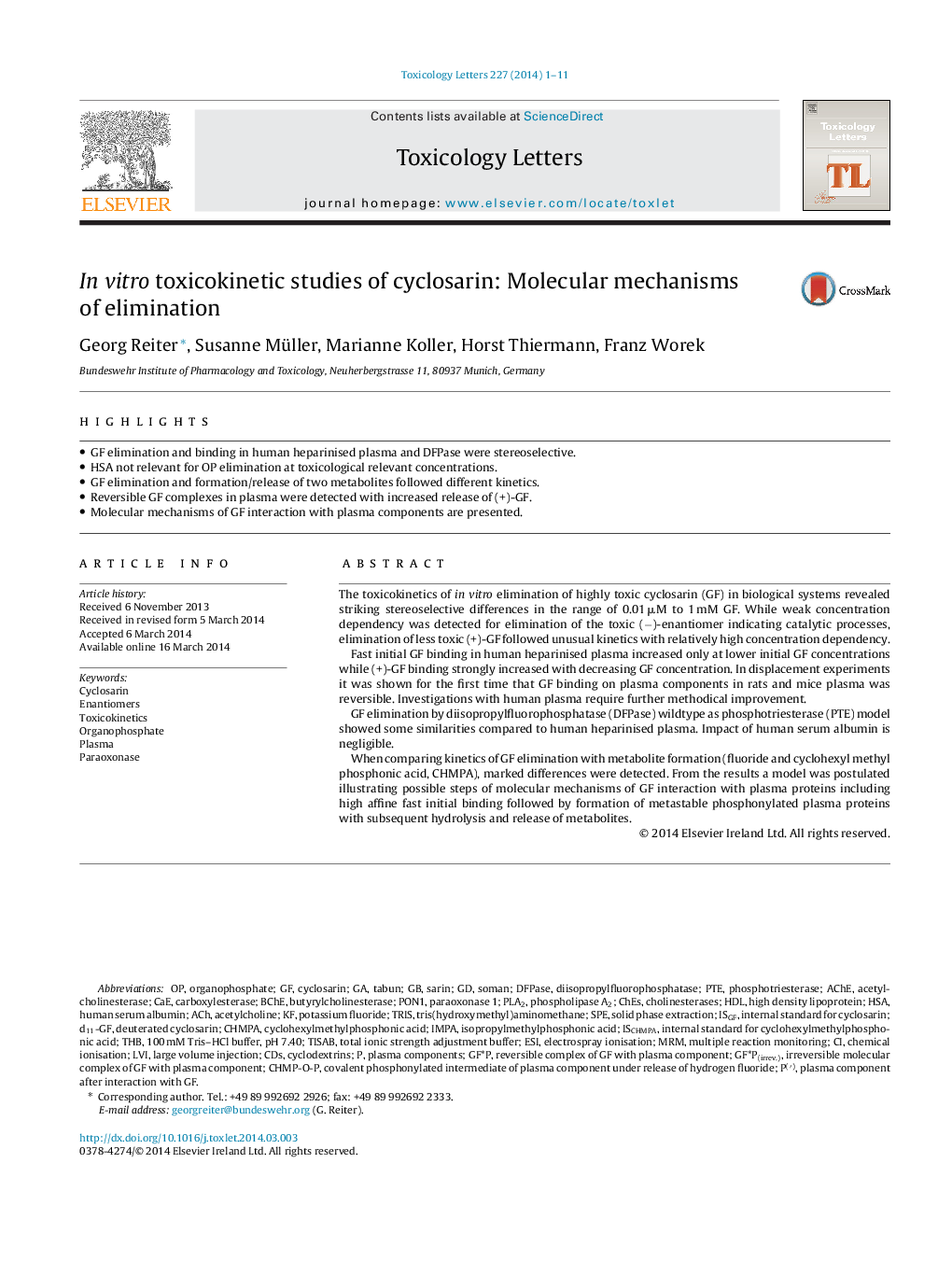| کد مقاله | کد نشریه | سال انتشار | مقاله انگلیسی | نسخه تمام متن |
|---|---|---|---|---|
| 5860216 | 1133171 | 2014 | 11 صفحه PDF | دانلود رایگان |

- GF elimination and binding in human heparinised plasma and DFPase were stereoselective.
- HSA not relevant for OP elimination at toxicological relevant concentrations.
- GF elimination and formation/release of two metabolites followed different kinetics.
- Reversible GF complexes in plasma were detected with increased release of (+)-GF.
- Molecular mechanisms of GF interaction with plasma components are presented.
The toxicokinetics of in vitro elimination of highly toxic cyclosarin (GF) in biological systems revealed striking stereoselective differences in the range of 0.01 μM to 1 mM GF. While weak concentration dependency was detected for elimination of the toxic (â)-enantiomer indicating catalytic processes, elimination of less toxic (+)-GF followed unusual kinetics with relatively high concentration dependency.Fast initial GF binding in human heparinised plasma increased only at lower initial GF concentrations while (+)-GF binding strongly increased with decreasing GF concentration. In displacement experiments it was shown for the first time that GF binding on plasma components in rats and mice plasma was reversible. Investigations with human plasma require further methodical improvement.GF elimination by diisopropylfluorophosphatase (DFPase) wildtype as phosphotriesterase (PTE) model showed some similarities compared to human heparinised plasma. Impact of human serum albumin is negligible.When comparing kinetics of GF elimination with metabolite formation (fluoride and cyclohexyl methyl phosphonic acid, CHMPA), marked differences were detected. From the results a model was postulated illustrating possible steps of molecular mechanisms of GF interaction with plasma proteins including high affine fast initial binding followed by formation of metastable phosphonylated plasma proteins with subsequent hydrolysis and release of metabolites.
Journal: Toxicology Letters - Volume 227, Issue 1, 16 May 2014, Pages 1-11